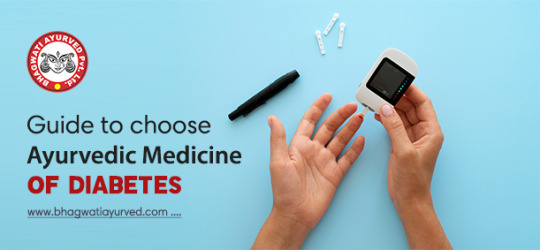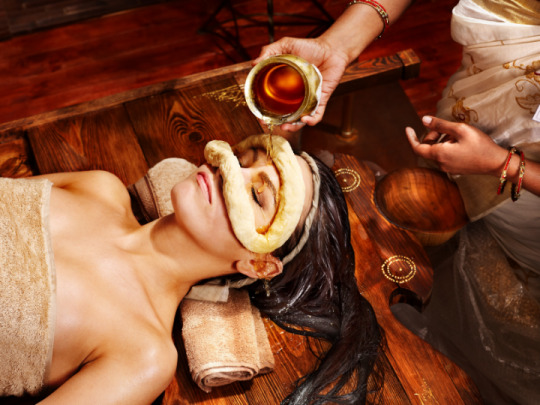#Ayurvedic Treatment for Diabetes Mellitus
Text
Holistic Healing: Ayurvedic Treatment for Diabetes Mellitus
Explore the natural approach to managing Diabetes Mellitus through Ayurveda. Our comprehensive Ayurvedic treatment focuses on balancing your body's energies, enhancing digestion, and promoting overall well-being. Discover personalized remedies, dietary guidance, and lifestyle modifications tailored to address the root cause of diabetes. Embrace a holistic path to wellness with our Ayurvedic experts, providing a time-tested approach to manage Diabetes Mellitus effectively. Prioritize your health and embark on a journey towards balance and vitality.
0 notes
Text
Managing diabetes mellitus through Ayurveda involves a comprehensive approach that includes dietary guidance, herbal remedies, and lifestyle changes. Our personalized treatments are designed to support blood sugar control and overall health. Discover how our Ayurvedic solutions can help you maintain a balanced and healthy life. 🌿🍃
0 notes
Text
Can Diabetes Be Reversed?
Introduction
Diabetes mellitus is a chronic condition characterized by high blood sugar levels, either due to insufficient insulin production or the body's resistance to insulin. While traditionally considered a lifelong condition, recent research and practices suggest that diabetes management and even reversal are possible under certain conditions. Diabetes mellitus is a complex and chronic metabolic disorder that primarily affects how the body regulates blood glucose levels. The disease manifests in two major forms: Type 1 and Type 2 diabetes. Type 1 diabetes, an autoimmune condition, occurs when the immune system erroneously targets and destroys the insulin-producing beta cells in the pancreas. In contrast, Type 2 diabetes is primarily characterized by insulin resistance, where the body's cells fail to respond effectively to insulin, combined with a progressive decline in insulin production.

The global incidence of diabetes has been rising at an alarming rate, driven by factors such as urbanization, sedentary lifestyles, and dietary changes. Diabetes not only impacts individuals’ quality of life but also poses significant public health challenges due to its association with serious complications like cardiovascular disease, neuropathy, nephropathy, and retinopathy.
Traditionally, diabetes management has focused on lifestyle modification, pharmacotherapy, and insulin therapy. However, growing evidence suggests that with a comprehensive approach that includes dietary changes, physical activity, and, in some cases, medical interventions, diabetes can be effectively managed and, in some instances, reversed. This evolving understanding emphasizes the need for both conventional and alternative strategies to address the disease holistically. .This article explores the nature of diabetes, its prevalence, risk factors, and detailed approaches for its reversal, including modern and Ayurvedic treatments.
Occurrence
Diabetes occurs when the pancreas fails to produce enough insulin or when the body cannot effectively use the insulin produced. There are two main types:
Type 1 Diabetes:An autoimmune condition where the immune system attacks insulin-producing beta cells in the pancreas.
Type 2 Diabetes:Characterized by insulin resistance and eventual pancreatic beta-cell dysfunction.
Prevalence
Diabetes is a global health crisis. According to the International Diabetes Federation (IDF), as of 2021, over 537 million adults were living with diabetes worldwide. This number is expected to rise to 783 million by 2045 if current trends continue. Type 2 diabetes constitutes the majority of these cases, often linked to lifestyle factors and genetic predispositions.
Risk Factors
Several risk factors contribute to the development of diabetes:
Genetics:Family history of diabetes increases susceptibility.
Obesity: Excess body weight, especially around the abdomen, is a major risk factor.
Physical Inactivity:Sedentary lifestyle contributes to insulin resistance.
Diet:High intake of processed foods, sugars, and unhealthy fats can elevate diabetes risk.
Age:Risk increases with age, especially after 45.
Ethnicity:Certain ethnic groups, including African, Hispanic, and Asian populations, have a higher prevalence.
Reversing Diabetes:Approaches according to morden science
1.Lifestyle Changes:
Weight loss, regular physical activity, and a balanced diet are critical. For many people with Type 2 diabetes, significant lifestyle modifications can improve insulin sensitivity and glycemic control, potentially leading to remission.
2.Medication:
While medication doesn't reverse diabetes, it helps manage blood sugar levels. Drugs such as metformin, GLP-1 agonists, and SGLT2 inhibitors are commonly used.
3.Bariatric Surgery:
In some cases, weight loss surgery has shown potential in reversing Type 2 diabetes by significantly improving insulin sensitivity and glycemic control.
Reversing Diabetes: Ayurvedic Approaches
Understanding Diabetes in AyurvedaIn Ayurveda, diabetes is known as "Prameha", which translates to "excessive urination." This condition is categorized into various types based on the nature of urine and associated symptoms. The most relevant type for contemporary understanding is "Madhumeha," where the urine is sweet, indicating high blood sugar levels. Ayurveda attributes diabetes to imbalances in the three doshas (vital energies) and dhatus (tissues). Specifically:
Vata Dosha: An imbalance can lead to increased urine frequency and dryness, contributing to Prameha.
Pitta Dosha: This dosha is associated with metabolic fire and can contribute to the production of excess sugar in the body.
Kapha Dosha: An imbalance often results in excessive accumulation and sluggish metabolism, which exacerbates diabetes.
Diabetes in Ayurveda is thus viewed as a disorder of metabolic and digestive systems, where the body fails to process glucose efficiently, leading to its excretion through urine.
Ayurvedic Management for DiabetesAyurvedic management of diabetes involves a multifaceted approach that integrates diet, lifestyle, herbal remedies, and detoxification methods. The goal is to restore balance in the doshas, improve metabolic function, and reduce blood sugar levels. Below are detailed
Ayurvedic strategies and patent drugs used for diabetes management:
1.Dietary Adjustments:
Dietary Principles: Ayurveda recommends a diet that balances all three doshas, focusing on foods that are low in glycemic index and high in fiber. Bitter, astringent, and slightly pungent tastes are believed to help control blood sugar levels.
Recommended Foods: Include whole grains like barley and millet, vegetables such as bitter gourd and fenugreek, and legumes like mung beans.
2.Herbal Remedies:
Bitter Melon (Momordica charantia): Often used in its natural form or as a component in Ayurvedic formulations. It has insulin-like properties and helps regulate blood glucose levels.
Fenugreek (Trigonella foenum-graecum): Used for its high soluble fiber content, fenugreek helps improve glucose tolerance and insulin sensitivity. It can be consumed in seed form or in tablet formulations.
Cinnamon (Cinnamomum verum): Known for its ability to improve insulin sensitivity, cinnamon is included in various Ayurvedic preparations.
Amla (Emblica officinalis): Amla is highly regarded for its antioxidant properties and its ability to enhance glucose metabolism. It is often used in the form of Chyawanprash or Amla powder.
3.Ayurvedic Patent Drugs:
Diabex Tablets (from various manufacturers): A combination of herbs such as bitter melon, fenugreek, and gymnema, designed to support glucose metabolism and insulin sensitivity.
Dia-Free Tablets: Typically contain a blend of Ayurvedic herbs like Guduchi (Tinospora cordifolia) and Bilva (Aegle marmelos), which are believed to have anti-diabetic properties.
Madhumeha Vati: An Ayurvedic formulation specifically designed for managing diabetes, incorporating herbs like Punarva (Boerhavia diffusa) and Haritaki (Terminalia chebula), which are thought to help reduce blood sugar levels.
4.Lifestyle Modifications:
Yoga and Exercise: Regular yoga practice, including asanas such as Sarvangasana (Shoulder Stand) and Bhujangasana (Cobra Pose), can enhance insulin sensitivity and support overall metabolic health. Pranayama (breathing exercises) also plays a role in stress reduction, which can positively impact blood sugar levels.
Sleep and Stress Management: Ayurveda emphasizes the importance of proper sleep and stress management. Practices such as meditation and relaxation techniques help balance doshas and improve metabolic functions.
5.Detoxification and Panchakarma:
Panchakarma: A series of detoxification therapies that include Vamana (therapeutic vomiting), Virechana (purgation), Basti (medicated enema), Nasya (nasal administration of medicated oils), and Raktamokshana (bloodletting). These procedures are intended to cleanse the body of toxins and restore dosha balance, which can aid in the management of diabetes.
Detox Herbs: Triphala (a combination of three fruits: Amalaki, Bibhitaki, and Haritaki) is commonly used to support digestion and detoxification.
6.Custom Formulations:
Ayurvedic practitioners may create personalized formulations based on an individual's specific dosha imbalances. Commonly used herbs include:
Shilajit: A mineral-rich substance that helps enhance energy and metabolism.
Guduchi (Tinospora cordifolia): Known for its immunomodulatory and anti-diabetic properties.
Vijaysar (Pterocarpus marsupium): This herb has been traditionally used to manage blood sugar levels and support pancreatic health.
The Ayurvedic approach to managing and potentially reversing diabetes integrates dietary changes, lifestyle adjustments, and herbal remedies tailored to individual needs. By focusing on balancing doshas, improving digestion, and reducing metabolic disturbances, Ayurveda provides a holistic framework for diabetes care. When combined with modern medical treatments, these traditional practices offer a comprehensive strategy for managing diabetes and enhancing overall well-being.

Conclusion
While diabetes, particularly Type 2, may not be universally "reversed," significant improvements in glucose control and overall health can be achieved through a combination of modern medical and traditional Ayurvedic approaches. Lifestyle changes, medication, and, in some cases, surgical interventions play crucial roles in managing diabetes. Meanwhile, Ayurveda offers complementary strategies that support holistic well-being. Together, these approaches offer hope for better management and potential remission of diabetes, underscoring the importance of personalized and integrative treatment plans.
0 notes
Text
Ayurvedic medicine for diabetes in USA.
Diabetes is a prevalent health condition in the United States, affecting millions of people. As conventional treatments sometimes fall short in managing this chronic disease, many individuals are turning to alternative therapies. One such alternative is Ayurveda, an ancient system of medicine originating from India. This blog explores the potential benefits and applications of Ayurvedic medicine for diabetes in USA.
Understanding Diabetes and Its Challenges
Diabetes mellitus, commonly referred to as diabetes, is a group of metabolic disorders characterized by high blood sugar levels over a prolonged period. The primary types are Type 1, Type 2, and gestational diabetes. Type 1 diabetes results from the body's failure to produce insulin, while Type 2 diabetes arises from insulin resistance. Gestational diabetes occurs during pregnancy and typically resolves after childbirth.
The management of diabetes is multifaceted, involving lifestyle modifications, medications, and sometimes insulin therapy. Despite the availability of various treatment options, maintaining optimal blood sugar levels remains a challenge for many. This difficulty has led to a growing interest in complementary and alternative medicine, including Ayurvedic medicine for diabetes in USA.
What is Ayurveda?
Ayurveda, which translates to "the science of life," is a holistic healing system developed over 3,000 years ago in India. It emphasizes the balance of mind, body, and spirit to promote health and well-being. Ayurvedic medicine employs a range of practices, including dietary changes, herbal remedies, physical exercises, and mental health techniques.
In Ayurveda, health is seen as a state of equilibrium among the body's three fundamental energies or doshas: Vata, Pitta, and Kapha. An imbalance in these doshas can lead to disease. Ayurvedic practitioners aim to restore this balance through personalized treatment plans, making it a tailored approach to healthcare.
Ayurvedic Perspective on Diabetes
In Ayurveda, diabetes is referred to as "Madhumeha," which translates to "honey urine" due to the sweet nature of the urine in diabetic patients. Ayurveda classifies diabetes into two categories: Apatharpana (depletion) and Santharpana (saturation). These categories roughly correspond to Type 1 and Type 2 diabetes, respectively.
Ayurvedic medicine for diabetes in USA incorporates a variety of natural treatments aimed at balancing the doshas and managing blood sugar levels. These treatments include herbal formulations, Morning Sickness During Pregnancy, dietary adjustments, yoga, and meditation. The holistic approach of Ayurveda not only targets the symptoms but also addresses the root cause of the imbalance.
Herbal Remedies in Ayurvedic Medicine for Diabetes
Herbal remedies play a crucial role in Ayurvedic medicine for diabetes in USA. These natural remedies are derived from plants and are believed to help regulate blood sugar levels, improve insulin sensitivity, and support overall health. Some of the commonly used herbs in Ayurvedic diabetes management include:
1. Bitter Melon (Momordica charantia)
Bitter melon is a tropical fruit that has been traditionally used in Ayurvedic medicine for its antidiabetic properties. It contains compounds like charantin and polypeptide-p, which are believed to lower blood sugar levels.
2. Fenugreek (Trigonella foenum-graecum)
Fenugreek seeds are rich in soluble fiber, which can help control blood sugar levels. They also contain amino acids that stimulate insulin production.
3. Gymnema Sylvestre
Gymnema Sylvestre, known as "sugar destroyer," is an herb that may help reduce sugar absorption in the intestines and enhance insulin function.
4. Turmeric (Curcuma longa)
Turmeric contains curcumin, a compound with anti-inflammatory and antioxidant properties. It may improve insulin sensitivity and reduce blood sugar levels.
5. Neem (Azadirachta indica)
Neem leaves have been traditionally used in Ayurveda to manage diabetes. They are believed to enhance insulin receptor sensitivity and improve glucose uptake by the cells.
Dietary Guidelines in Ayurvedic Medicine for Diabetes
Diet plays a significant role in managing diabetes in Ayurveda. Ayurvedic dietary guidelines focus on foods that balance the doshas and promote stable blood sugar levels. Here are some general dietary recommendations:
1. Emphasize Whole Foods
Consume a diet rich in whole foods such as fresh fruits, vegetables, whole grains, and legumes. These foods provide essential nutrients and fiber that help regulate blood sugar levels.
2. Avoid Processed Foods
Processed foods often contain refined sugars and unhealthy fats that can spike blood sugar levels. Avoid sugary snacks, fried foods, and processed grains.
3. Include Bitter and Astringent Foods
Bitter and astringent foods, such as leafy greens, bitter gourd, and legumes, are beneficial for managing diabetes. They help reduce blood sugar levels and balance the doshas.
4. Eat Regular Meals
Eating regular, balanced meals helps maintain stable blood sugar levels. Avoid skipping meals, as it can lead to blood sugar fluctuations.
5. Stay Hydrated
Drink plenty of water throughout the day to stay hydrated. Proper hydration supports overall health and helps regulate blood sugar levels.
Ayurvedic Lifestyle Practices for Diabetes Management
In addition to dietary changes and herbal remedies, Ayurvedic medicine for diabetes in USA also emphasizes lifestyle practices. These practices aim to promote overall well-being and Morning Sickness During Pregnancy and balance the doshas.
1. Yoga
Yoga is a cornerstone of Ayurvedic lifestyle practices. It combines physical postures, breathing exercises, and meditation to promote mental and physical health. Specific yoga poses, such as the "Twist Pose" and "Shoulder Stand," are believed to stimulate the pancreas and improve insulin production.
2. Meditation
Meditation helps reduce stress, which is a significant factor in diabetes management. Regular meditation practice can lower cortisol levels and improve blood sugar control.
3. Pranayama (Breathing Exercises)
Pranayama involves controlled breathing techniques that enhance oxygen flow and reduce stress. Practices like "Kapalbhati" and "Anulom Vilom" are beneficial for diabetes management.
4. Daily Routine (Dinacharya)
Following a consistent daily routine, or "Dinacharya," helps maintain balance in the doshas. This includes regular waking and sleeping times, meal schedules, and exercise routines.
Morning Sickness During Pregnancy and Ayurveda
While discussing Ayurvedic medicine for diabetes in USA, it's essential to mention that Ayurveda also offers solutions for various other health issues, including "Morning Sickness During Pregnancy." Morning sickness, characterized by nausea and vomiting, is a common condition during pregnancy. Ayurvedic remedies for morning sickness include:
1. Ginger
Ginger is a well-known remedy for nausea. Consuming ginger tea or ginger candies can help alleviate morning sickness symptoms.
2. Lemon
Lemon's refreshing scent and taste can help reduce nausea. Drinking lemon water or inhaling lemon essential oil can be beneficial.
3. Peppermint
Peppermint tea or peppermint essential oil can help soothe the stomach and reduce nausea.
4. Fennel Seeds
Chewing fennel seeds or drinking fennel tea can aid digestion and reduce morning sickness symptoms.
5. Dietary Adjustments
Eating small, frequent meals and avoiding spicy or greasy foods can help manage morning sickness.
Integrating Ayurvedic Medicine into Modern Healthcare
Integrating Ayurvedic medicine for diabetes in USA into modern healthcare requires a collaborative approach. Healthcare providers and Ayurvedic practitioners can work together to develop comprehensive treatment plans that address the unique needs of diabetic patients. This integration can offer several benefits:
1. Personalized Treatment
Ayurvedic medicine emphasizes individualized treatment plans based on a person's constitution and dosha imbalance. This personalized approach can complement conventional diabetes treatments.
2. Holistic Health
Ayurveda addresses not only the physical aspects of diabetes but also the mental and emotional components. This holistic approach can lead to improved overall well-being.
3. Natural Remedies
Ayurvedic medicine relies on natural remedies, which may have fewer side effects compared to some conventional medications. These remedies can be used alongside prescribed treatments to enhance their effectiveness.
4. Preventive Care
Ayurveda places a strong emphasis on preventive care through lifestyle and dietary modifications. This preventive approach can help reduce the risk of diabetes-related complications.
Challenges and Considerations
While Ayurvedic medicine for diabetes in USA offers promising benefits, there are challenges and considerations to keep in mind:
1. Scientific Evidence
More scientific research is needed to validate the efficacy of Ayurvedic treatments for diabetes. While some studies show positive results, larger and more rigorous trials are necessary.
2. Quality Control
The quality and purity of Ayurvedic herbal products can vary. It's crucial to source products from reputable manufacturers to ensure safety and efficacy.
3. Integration with Conventional Medicine
Integrating Ayurvedic and conventional treatments requires open communication between healthcare providers and patients. Patients should inform their doctors about any Ayurvedic treatments they are using to avoid potential interactions with prescribed medications.
4. Accessibility
Access to qualified Ayurvedic practitioners and authentic herbal products can be a challenge in some areas of the USA. Efforts to increase awareness and availability of Ayurvedic medicine are essential.
Future Prospects of Ayurvedic Medicine for Diabetes in USA
The future of Ayurvedic medicine for diabetes in USA looks promising as more people seek holistic and natural approaches to healthcare. Several trends and developments indicate a growing acceptance and integration of Ayurveda:
1. Research and Education
Increased research and educational initiatives are helping to bridge the gap between Ayurveda and modern science. Collaborative studies and academic programs are promoting a better understanding of Ayurvedic principles and practices.
2. Healthcare Integration
More healthcare providers are recognizing the value of integrative medicine, which combines conventional and alternative therapies. Integrative healthcare centers are becoming more common, offering patients a range of treatment options.
3. Consumer Demand
Consumer interest in natural and holistic health solutions continues to rise. As awareness of Ayurveda grows, more people are seeking Ayurvedic treatments for diabetes and other health conditions.
4. Regulatory Support
Efforts to regulate and standardize Ayurvedic medicine are underway, ensuring the quality and safety of Ayurvedic products and practices. Regulatory support can enhance the credibility and acceptance of Ayurveda in mainstream healthcare.
Conclusion
Ayurvedic medicine for diabetes in USA offers a holistic approach to managing this chronic condition. By addressing the underlying imbalances in the body and promoting overall well-being, Ayurveda provides a complementary option to conventional treatments. Herbal remedies, dietary adjustments, lifestyle practices, and preventive care are key components of Ayurvedic diabetes management.
As interest in holistic health solutions grows, the integration of Ayurvedic medicine into modern healthcare holds great promise. With continued research, education, and collaboration, Ayurveda can play a significant role in improving the lives of those living with diabetes.
Moreover, Ayurveda's approach to conditions like morning sickness during pregnancy showcases its versatility and potential benefits for various health issues. Embracing Ayurvedic principles can lead to a balanced and healthier life, reflecting the timeless wisdom of this ancient healing system.
0 notes
Text
Guide to choose Ayurvedic Medicine of Diabetes

Diabetes is referred to in Ayurveda as "Madhumeha" or "Prameha," and it is viewed as a persistent metabolic disease that throws off the equilibrium between the "Kapha" and "Pitta" doshas. According to Ayurveda, diabetes is a metabolic disorder marked by excessively high blood glucose levels brought on by insufficient sugar metabolism.
Guide to choose Ayurvedic Medicine of DiabetesIn Ayurveda, there are numerous varieties, including Vataja, Pittaja, and Kaphaja Madhumeha. Each variety is distinguished by a unique set of symptoms and the function of a distinct dosha. Ayurvedic treatment aims to balance the doshas and regulate blood sugar levels through dietary modifications (including the use of herbs like Jamun and Gudmar), Panchakarma therapies for detoxification, stress reduction, and lifestyle improvements (including the use of herbs). While Ayurveda provides thorough approaches to managing diabetes, it is best used in conjunction with mainstream medical care. Patients should continue to monitor and manage their condition under the close supervision of their physicians.
With a focus on balancing the body's energy, Ayurvedic approaches to diabetes care include dietary adjustments, lifestyle alterations, and the use of herbal medicines. One of the greatest Ayurvedic Medicine of Diabetes is the Diabetes Care Pack from Bhagwati Ayurved; it will assist you in controlling your blood sugar levels. The most effective ayurvedic medication for diabetes is this one.
Benefits
Adequate control is maintained over dangerous cholesterol levels, and blood sugar levels remain steady.
Enhances liver function, facilitates weight control, helps maintain blood pressure within a healthy range, and facilitates digestion.
Enhances Insulin Efficiency
What Is the Ayurvedic Diabetes Treatment Process?
Diabetes and ayurvedic treatment go hand in hand. Ayurveda is an alternative medicine system that prioritizes the general health and well-being of the patient over the treatment of individual ailments. The aim of this project is to deal with the problem at its source.
Diabetes is known as madhumeha in Ayurvedic medicine, which translates to "sweet urine" in English. Vata Prameha is the term used to describe diabetes mellitus. It manifests as an imbalance in the Vata Dosha, one of the three functioning energies in the body. Kapha Prameha is another name for the medical condition known as diabetes insipidus. The imbalance in the Kapha Dosha is the reason behind this.
Treatment of diabetes based on Ayurvedic principles
Ayurveda is a promising tool in the battle against diabetes and other health conditions because of its integrative nature. Ayurveda suggests employing multiple strategies. Ayurvedic-based treatments are a component of the management strategy.
The detoxification process can be accelerated using a variety of therapies, which helps the body feel more renewed. These are helpful in cases of severe diabetes.
Changing one's diet can aid in the control of diabetes.
Changing key aspects of one's lifestyle can help control diabetes more effectively.
Your primary objective should be to maintain a healthy lifestyle above everything else. Establishing a regular workout schedule can assist with this. Joining a gym, avoiding particular meals, and include bitter fruits in your diet are all potential remedies. Astringent fruits and vegetables, such as bitter gourd and gourd, can help regulate blood sugar levels.
From an Ayurvedic perspective, managing diabetes
If you've been looking for a place to receive an effective Ayurvedic therapy for diabetes, have your treatment by Bhagwati Ayurved and their Medicine of Diabetes in Ayurved. Bhagwati Ayurved skilled Ayurvedic practitioners has made it feasible for them to consistently give patients the finest care possible by customizing their therapies to meet each individual's demands and situations. There are many more Ayurvedic shop in India, but Bhagwati Ayurved is one of the most well-known and prestigious. For many years, it has assisted individuals in achieving and sustaining holistic wellness. The customized therapies prescribed by the medical professionals significantly increase the chance that blood glucose levels will stay normal when paired with consistent exercise and yoga, a low-carb diet customized for each patient, and little stress in daily life.
#Ayurvedic Medicine Of Diabetes#Ayurvedic Medicine for Diabetes#Ayurvedic Treatment of Diabetes#Medicine Of Diabetes In Ayurved
0 notes
Text

ayurvedic eye treatment in kerala
Diabetic Retinopathy Ayurvedic Treatment At Matha
Matha was the first ayurvedic hospital to chart out a new direction in ayurvedic treatment of diabetic retinopathy, which is now widely accepted and followed by all the ayurvedic physicians treating diabetic retinopathy.
Eye treatments at Matha have methods to preserve existing eyesight for diabetic retinopathy conditions. DR is caused due to prolonged high blood glucose levels. In diabetic eye disease, abnormal blood vessels develop that can break, bleed, and leak fluid. Sometimes tiny bulges called microaneurysms may protrude from the vessel walls. This leads to leakage or oozing of fluid and blood into retina. This fluid causes edema in the central part of macula leading to diabetic macular edema. Regaining the lost ability to see depends on the clinical stage when a patient starts treatment. It is always important for a patient to start treatment as early as possible. It is also very important to maintain blood glucose, blood pressure and blood cholestrol levels. ayurveda treatment for diabetic retinopathy takes around 14 to 16 days. The clinical-stage when medications are started is a very crucial factor. know more about ayurveda treatments for diabetic retinopathy.
Systematic ayurvedic cure for diabetic retinopathy has three benefits:
It prevents the onset
It preserves the existing vision
It regains lost vision.
The stage when a patient starts treatment is very crucial. The outcome of treatment depends on it. This condition develops in anyone who has type 1 or type 2 diabetes. Type 1, is also known as insulin-dependent diabetes. It is characterized by beta-cell destruction. It leads to absolute insulin deficiency. On the other hand, Type 2 is characterized by insulin resistance. This may be due to an insulin secretory defect that may lead to relative insulin deficiency. The longer a person has diabetes and the less controlled his blood sugar is more likely are his chances to develop this eye complication. Diabetes mellitus destructs tissue surrounding the retina, including optic nerves. Retinopathy impairs optic nerves by damaging its conduction as well as integrity.Earlier the treatment, better the results. Matha had identified Diabetic Retinopathy as a core focus area right from its inception. Matha is the first ayurvedic treatment centre to introduce a protocol for the specialized screening, prevention, and treatment program for diabetic retinopathy.
youtube
Systematic ayurvedic cure for diabetic retinopathy
Eye treatments at Matha have methods to preserve existing eyesight for diabetic retinopathy conditions. Matha is the first ayurvedic treatment centre to introduce a protocol for the specialized screening, prevention, and treatment program for diabetic retinopathy.
Our focus is on providing the best ayurvedic treatment to patients
Our facilities are designed and built for middle class Indian patients.
Our Kitchen provides veg diet suitable for ayurveda and yoga.
Matha is not a research Institute. We do not conduct research on our patients.
We prepare herbal medications in our own GMP certified manufacturing unit.
Book Your Consultation Now

There are two typical types of retinopathy. They are Non-proliferative diabetic retinopathy (NPDR) and Proliferative diabetic retinopathy (PDR).
Non-proliferative diabetic retinopathy (NPDR)
NPDR (Non-proliferative diabetic retinopathy) is milder than PDR. Here, the blood vessels become congested. The blood flow slows down. Vessel walls become thickened most by deposits. Changes to properties of the vessel wall contribute to this thickening. Blockages also develop in the blood flow. This develops Branch retinal venous occlusion (BRVO) or Branch artery occlusion. Here, high cholesterol (hypercholesteremia) is also an extra contributing factor. This occlusion may also happen in the central retinal artery. This specific condition is Central retinal artery occlusion. If it happens in the central retinal vein, it is central retinal venous occlusion (CRVO).
CRVO is very serious and the patient may feel a sudden loss of vision. In NPDR, there will be a tendency for small haemorrhages. Small dots and blots of haemorrhages are also seen in most cases. Here, there is an involvement of Kapha also. Actually, Kapha is vitiating pitta and raktha.
The very characteristic properties of Kapha increases. These are Snigdha, guru, pichila etc. and this, in turn, affect pitta. Hence, the characteristic properties of pitta get damaged. The Sara and Drava properties of pitta and raktha become decreased. So, the changes mentioned above develop. Sedentary lifestyles, lack of exercise, and excessive sleep increase the properties of Kapha. Daytime sleep, excessive intake of curd, deep-fried items, etc. also increases Kapha. Vitiation of pitta happens by this Kapha and thereby raktha. This affects consistency and the free flow of blood. There will be deposits on blood vessels and blockages in the veins or arteries of the retina. Here, treatment aims to control Kapha dominance and protect the properties of pitta. Moderate physical exercise (other than head down postures) is very good. Using suitable oil for head massage and nasal drops etc are very good.
Doctors use medicines in the form of Eyewash and eye drops. Triphala, Yashti, Darvi etc are very good for the preparation of eyewash and drops. In diet, avoid all types of heavy and oily food. Instead, add Steamed vegetables, leafy vegetables, sprouted pulses. Systematic ayurvedic management protects against visual impairment in this stage. But it should be by an expert hand only.
youtube
PDR (Proliferative diabetic retinopathy)
In PDR, there will be leakages and haemorrhages from the blood vessels of the retina. In severe conditions, it may penetrate into the vitreous (vitreous haemorrhage). Here, the vitreous fluid also becomes spoiled. As a result of vast haemorrhage, there will be hypoxia (anemia) of the retina. These damages the function of retinal cells. New collateral blood vessels may develop to compensate for the hypoxia. This condition is neovascularization. But these blood vessels may be very weak leading to easy bleeding. This makes the situation worse.
In PDR, there will be blood clot deposits on the retina. Here, pitta and raktha are the dominant factors. Factors that increase the properties of pitta is capable of developing this stage. Examples are working on laptop and mobile screen for a long time. Working late nights and lack of sleep also support the development of this stage. Exposure to bright light or sunlight is also dangerous. Exposure to excessive travel, especially in sunlight, etc. are not good.
In food habits, hot and spicy items are the worst. Deep-fried items, sour tasted items such as pickles are contributing factors. Pitta prakriti patients are more susceptible to PDR. External factors such as summer days, windy days, are also contributing factors. Even mental stress and strain are capable of developing PDR in a diabetic patient. There are situations when an NPDR can evolve to PDR. One instance is when NPDR takes more pitta dominant food items. Another instance is when an NPDR patient undergoes the above explained habitual factors.
Maculopathy is a condition where pathological changes get concentrated in the macular area. In maculopathy, there will be the encroachment of blood vessels to the macular area. Bleeding to the macula is also common. When there is an accumulation of edema fluid in the macular area, it becomes macular edema. Deposits in the macula is another common pathological change. Maculopathy is very very serious and vision loss is almost inevitable if not treated in time. In PDR, the foremost aim of management is to arrest the bleeding. For this, total physical rest is necessary. Never go for heavy physical exercise as a part of diabetic control. This is very important. Adopt only very mild and selective postures as per the direction of an expert. Avoid exposure to bright light and focus on light sources. Selective oil for head massage is very good.
The drugs used for the medication of this oil should have pitta samana properties. This is to control the dominance of pitta. Amla, useera, Chandana, yashti etc are examples. Among food items, avoid too sour tasted items. Too many spicy items are also dangerous. Fleshy and watery vegetables such as cucumber are preferable. Use Protein-rich vegetables and sprouted spices. Natural Cold drinks such as amla water are good for drinking purposes. Water boiled with useera, dry amla is also very good.
Here, systematic level ayurvedic treatment is necessary. Sirodhara, sirolepanam, netrasekam, vitalakam, etc are the treatment procedures. The medicines for these procedures should be very selective. An experienced ayurvedic ophthalmologist can decide it for you. This will help to protect your eyes and vision.
youtube
Three stages in ayurveda treatment of diabetic retinopathy
Matha was the first ayurvedic hospital to chart out a new direction in ayurvedic treatment of diabetic retinopathy, which is now widely accepted and followed by all the ayurvedic physicians treating diabetic retinopathy.
1
The first stage of diabetic retinopathy starts as a complication of diabetes mellitus. It has no warning signs before onset. Proactive diabetic patients undergo regular eye checkups. Even if they have no sight problems. This helps to identify symptoms even before the start of loss of visual perception. We have identified the initial symptoms of retinopathy from past treatment experiences. Mild headache and eye strain while reading is main among them. Strain while working on the computer and watching T.V come next. Fullness is a warning sign. So is the heaviness of head and eye, particularly in the early morning. Hypersensitivity to bright light and watering of the eyes are also typical symptoms. Getting the opportunity to start treatment at this early stage is valuable. It helps prevent the disease altogether. Matha follows proven ayurvedic treatments for diabetic retinopathy in this stage. According to ayurvedic science, this is the initial stage of Kapha predominance. It is also known as Nethrabhyshyandha. The line of treatment is sira-sodhanam. Treatments like Nasyam, Gandoosham, kablam, etc. are more preferable than ophthalmic applications.
2
The second stage of diabetic retinopathy happens if it is not controlled during the first stage. Extend of this progress depends on the various contributing factors, described earlier. From our experience, there are typical symptoms at this stage also. They are blurring of eyesight and metamorphopsia. Burning sensation in the eye and photophobia are also seen. The primary pathological change seen in this stage is the dilation of vessels. Retinal vessels become congested. Blockages happen in the microvascular system of the retina. Retinal edema, hemorrhages, exudates, and neovascular changes are also common. Treatments starting in the third stage concentrate on two distinct aspects. A primary aim is to preserve and protect the existing ability to see. The second aim is to regain lost vision. According to Ayurveda, pitta is the predominant dosha in this stage. Pittasamana must be the line of treatment. The treatments done are Sirodhara, netrasekam, vitalakam aschotanam, and thalam. Strict dietary restrictions are also needed. Medication and diet control are not enough at this stage. Other precautions and care are also needed. For e.g., habitual factors like head bath, sleep, journey and abhyanga oil application. Only an experienced ayurvedic ophthalmologist can do it. Systematic treatment at this stage avoids further vision loss and complications. Matha has successful treatments to protect the eyesight of affected patients.
Ayurveda treatment for diabetic retinopathy is a very wise mix of preventive and curative measures. during the first and second stages.
3
In the third stage, patients experience severe problems. Macular hole, retinal detachment, and other degenerative changes are main among them. The disease has now turned to a complication. This happens when retinopathy is not treated in the second stage. Continuation of etiological factors is another reason for proceeding to the third stage. Now, a strict line of treatment is not possible. Ayurveda treatment for diabetic retinopathy varies according to complications. For e.g., Retinal detachment can happen when abnormal blood vessels associated with diabetic retinopathy stimulate the growth of scar tissue, which pull the retina away from back of eye. For complications of detachment, treatment is on a Vata predominant approach. Pitta is an important treatment consideration for neo-vascularisation. For fluid accumulation, Kapha is the primary treatment factor. Systematic and high-level ayurvedic treatments are to be tailor-made for each specific complication. Confirmation of expected results happens only after a detailed assessment of the patient.
#yoga#backpain#kerala#ayurvedalifestyle#panchakarma#ayurveda treatment#ayurveda#diabetes#frozen shoulder#migraine#Youtube
0 notes
Text
Best Ayurvedic Treatment For Diabetes

Best Ayurvedic Treatment For Diabetes Explore traditional Ayurvedic remedies tailored to manage diabetes naturally, targeting root causes and promoting holistic wellness. Embrace herbal formulations, dietary adjustments, and lifestyle modifications to regulate blood sugar levels and improve overall health. Ayurveda offers personalized approaches that prioritize balance and harmony for the long-term management of diabetes mellitus.
0 notes
Text
We humans often understand




























We humans often understand
This creation of life in this world is a miracle of nature and we humans are the custodians of the whole world.
Whereas friends we can't treat ourselves
We have to depend on others even for food
When will the trees bear fruit? When will a deer make it easier for me to hunt so that I can cook it and eat it?
Friends, I myself have been suffering from sugar disease for many years.
no medicine is working for me
And I'm writing with my head held high
We humans are the protectors of the whole world
While I live in our present energy-conquering civilization, I do not understand the chemical reactions in my body.
And I am writing very big things, we humans are the protectors of the whole world, my friends.
Well I'm in a lot of trouble guys
Hey friends, can you give me some suggestions to get rid of this problem of sugar disease?
What should be done to get protection from sugar disease?
Get rid of type 2 diabetes - Say Goodbye to Medicines
sugar.fit
No fad diets or intensive lifestyle changes.We reverse diabetes with simple habits changes
Control Sugar By Natural Way - ways to reduce blood sugar
cowurine.com
Today, 77 million adults are living with diabetes ( diabetes mellitus ) in India. And it’s no surprise that the numbers are predicted to increase to 134 million by 2045.
The sole treatment for diabetes is AYURVEDA. The ayurvedic approach for treatment varies from person to person depending on the severity of the disease. Ayurveda works on a person’s three doshas - The Vata, Pitta, and Kapha which maintains our overall health. We are glad to say that we have seen so many positive results through our treatments by the combination herbs which provides-
Insulin support to regulate glucose levels
Better and healthy glucose metabolism.
Support healthy living.
Treat type 1, type 2 and gestational diabetes with our Ayurvedic solutions.
Regulate your blood sugar levels with our herbal supplements naturally with insulin resistance and prevent prameha(diabetes), Ikshumeha ( glycosuria), madhumeha( diabetes mellitus), Bahumutrata (polyurea) and nadidaurbalya ( nervous weakness).
Diabetes Tips & Strategies - Natural Diabetes Management
DIABETES FREE LIFE
Explore our resources for a healthier diabetic lifestyle. Get informed & inspired! Learn about natural and effective ways to manage diabetes. Start your journey! Clinically Proven. Diabetes Reversal Program. 21 day Reversal Program.
Treatment For Diabetes · Diabetes Reversal Plan · Food Preparation Tips · Diabetes Articles
Diabetes prevention: 5 tips for taking control
Mayo Clinic
https://www.mayoclinic.org › in-depth › art-20047639
1. Lose extra weight · 2. Be more physically active · 3. Eat healthy plant foods · 4. Eat healthy fats · 5. Skip fad diets and make healthier choices.
What is the prevention of sugar disease?
Diabetes
A healthy diet, regular physical activity, maintaining a normal body weight and avoiding tobacco use are ways to prevent or delay the onset of type 2 diabetes. Diabetes can be treated and its consequences avoided or delayed with diet, physical activity, medication and regular screening and treatment for complications.5 Apr 2023
How do you maintain sugar disease?
Other tips include:
Keep track of your blood sugar levels to see what makes them go up or down.
Eat at regular times, and don't skip meals.
Choose foods lower in calories, saturated fat, trans fat, sugar, and salt.
Track your food, drink, and physical activity.
Drink water instead of juice or soda.
Actually diabetes means sugar disease is the cause of trouble for many people.
The efforts of everyone in this country and abroad to come together to pay attention to this sugar disease has proved necessary in today's civilization.
Translate Hindi
हम इंसान अक्सर समझते है
यह इस दुनिया में जीवन सृष्टि प्रकृति की करिश्मा है और हम इंसान ही है पूरी दुनिया का रखवाला
जबकी दोस्तों हम अपना उपचार खुद नहीं कर सकते
हमें खाना खाने के लिए भी दूसरों पर निर्भर रहना पड़ता है
कब पेड़ों फल देगा कब एक हिरण मुझे शिकार करने की सुविधा बना देगा ताकि मैं उसे पकाकर खा पाऊं
दोस्तों मैं खुद शुगर डिजीज से काफी साल परेशान हूँ
कोई दवाई मेरा काम नहीं आ रहा है
और मैं सर ऊचाकर लीख रहा हूँ
हम इंसान ही है पूरी दुनिया का रखवाला
जबकी मैं हमारी इस आज की एनर्जी जीत करने वाली सभ्यता में रहकर मेरी शरीर की केमिकल विक्रिया को समझता नहीं हूँ
और मैं बहुत बढ़ी बढी बात लीख रहा हूँ हम इंसान ही है पूरी दुनिया का रखवाला मेरे दोस्तों
खैर मैं बहुत परेशान में हूँ दोस्तों
हे दोस्तों इस शुगर डिजीज की तकलीफ से निकालने का कुछ सुझाव आप मुझे दे सकते हो
शुगर डिजीज में से रक्षा पाने के लिए क्या करना चाहिए
टाइप 2 मधुमेह से छुटकारा पाएं - दवाओं को अलविदा कहें
चीनी.फिट
कोई सनक भरी डाइट या गहन जीवनशैली में बदलाव नहीं। हम साधारण आदतों में बदलाव के साथ मधुमेह को उलट देते हैं
प्राकृतिक तरीके से शुगर कंट्रोल करें - ब्लड शुगर कम करने के उपाय
काउयूरिन.कॉम
आज, भारत में 77 मिलियन वयस्क मधुमेह (डायबिटीज़ मेलिटस) से पीड़ित हैं। और इसमें कोई आश्चर्य की बात नहीं है कि 2045 तक यह संख्या बढ़कर 134 मिलियन हो जाने का अनुमान है।
मधुमेह का एकमात्र इलाज आयुर्वेद है। रोग की गंभीरता के आधार पर उपचार के लिए आयुर्वेदिक दृष्टिकोण व्यक्ति-दर-व्यक्ति भिन्न होता है। आयुर्वेद व्यक्ति के तीन दोषों - वात, पित्त और कफ पर काम करता है जो हमारे समग्र स्वास्थ्य को बनाए रखता है। हमें यह कहते हुए खुशी हो रही है कि हमने जड़ी-बूटियों के संयोजन से अपने उपचार के माध्यम से बहुत सारे सकारात्मक परिणाम देखे हैं जो प्रदान करते हैं-
ग्लूकोज के स्तर को नियंत्रित करने के लिए इंसुलिन समर्थन
बेहतर और स्वस्थ ग्लूकोज चयापचय।
स्वस्थ जीवन का समर्थन करें.
हमारे आयुर्वेदिक समाधानों से टाइप 1, टाइप 2 और गर्भकालीन मधुमेह का इलाज करें।
प्राकृतिक रूप से इंसुलिन प्रतिरोध के साथ हमारे हर्बल सप्लीमेंट्स के साथ अपने रक्त शर्करा के स्तर को नियंत्रित करें और प्रमेहा (मधुमेह), इक्षुमेहा (ग्लाइकोसुरिया), मधुमेहा (मधुमेह मेलिटस), बहुमुत्रता (पॉलीयूरिया) और नादिदौर्बल्या (तंत्रिका कमजोरी) को रोकें।
मधुमेह युक्तियाँ और रणनीतियाँ - प्राकृतिक मधुमेह प्रबंधन
मधुमेह मुक्त जीवन
स्वस्थ मधुमेह जीवन शैली के लिए हमारे संसाधनों का अन्वेषण करें। सूचित एवं प्रेरित हों! मधुमेह को प्रबंधित करने के प्राकृतिक और प्रभावी तरीकों के बारे में जानें। अपनी यात्रा शुरू करें! नैदानिक साबित। मधुमेह उत्क्रमण कार्यक्रम. 21 दिवसीय उत्क्रमण कार्यक्रम।
मधुमेह के लिए उपचार · मधुमेह रिवर्सल योजना · भोजन तैयार करने की युक्तियाँ · मधुमेह लेख
मधुमेह की रोकथाम: नियंत्रण रखने के लिए 5 युक्तियाँ
मायो क्लिनिक
https://www.mayoclinic.org › गहराई › कला-20047639
1. अतिरिक्त वजन कम करें · 2. अधिक शारीरिक रूप से सक्रिय रहें · 3. स्वस्थ पादप खाद्य पदार्थ खाएं · 4. स्वस्थ वसा खाएं · 5. सनक आहार छोड़ें और स्वस्थ विकल्प चुनें।
शुगर रोग से बचाव क्या है?
मधुमेह
स्वस्थ आहार, नियमित शारीरिक गतिविधि, शरीर का सामान्य वजन बनाए रखना और तंबाकू के सेव�� से बचना टाइप 2 मधुमेह की शुरुआत को रोकने या विलंबित करने के तरीके हैं। मधुमेह का इलाज किया जा सकता है और इसके परिणामों को आहार, शारीरिक गतिविधि, दवा और जटिलताओं के लिए नियमित जांच और उपचार से टाला या विलंबित किया जा सकता है। 5 अप्रैल 2023
आप शुगर की बीमारी को कैसे बनाए रखते हैं?
अन्य युक्तियों में शामिल हैं:
यह देखने के लिए अपने रक्त शर्करा के स्तर पर नज़र रखें कि किस कारण से यह ऊपर या नीचे जाता है।
नियमित समय पर खाएं और भोजन न छोड़ें।
कम कैलोरी, संतृप्त वसा, ट्रांस वसा, चीनी और नमक वाले खाद्य पदार्थ चुनें।
अपने भोजन, पेय और शारीरिक गतिविधि पर नज़र रखें।
जूस या सोडा की जगह पानी पियें।
सच में मधुमेह मतलब शुगर डिजीज काफी लोगों का परेशानी के कारण है
यह देश विदेश महादेश सबकी कोशिश इस शुगर डिजीज ओर ध्यान देकर एकत्र हो जाना आज की सभ्यता में जरूरी साबित हो गया है
0 notes
Text
Ayurvedic Prevention Techniques for Lifestyle Disorders

In our busy modern lives, health issues caused due to stress, inactivity, and poor diets have become common. But in Ayurveda, there's a guide to help prevent these problems. Ayurveda, a traditional remedy for staying healthy, has tricks to tackle the challenges of modern life. The blog ‘Ayurvedic Prevention Techniques for Lifestyle Disorders’ will show you how Ayurvedic tips can fit into your daily routine. From simple habits to special treatments, Ayurveda helps keep you healthy and balanced. Together with the best Ayurvedic hospital in Dubai, let's explore how Ayurveda can be your friend in staying strong, happy, and well.
What are Lifestyle Disorders?
Lifestyle disorders, which are sometimes referred to as Non-communicable diseases (NCDs) in health terms, constitute a group of various chronic diseases whose development is predominantly predetermined by one’s lifestyle. These are non-infectious and their manifestation is mainly from chronic exposure to various other factors including poor diet, sedentary lifestyle etc. Lifestyle disorders include types of diseases such as cardiovascular illnesses, type 2 diabetes mellitus, obesity phenomena and some sorts of cancer. Different from single causes’ disorders, lifestyle illnesses are multifactorial where genetic predisposition as well as environmental factors play a role and therefore respond well to modification of lifestyles.
The modern world is a fast-paced one, and this has led to the rise of lifestyle disorders in contemporary times. These health challenges are linked to sedentary jobs, the use of processed foods, and always being hooked up or connected to bots. Unlike some conditions, lifestyle disorders are preventable and controllable through intentional attempts to embrace healthy practices. With this knowledge of how daily decisions affect general welfare, people can actively reorient their lifestyles to minimise the risk of these disorders and attain lasting health and well-being.
What are the Common Lifestyle Disorders?
You may have heard about lifestyle disorders. Let us look at them in detail a bit:
Cardiovascular Diseases: These are conditions affecting the heart and blood vessels, such as heart disease and stroke, which are results of a sedentary lifestyle, unhealthy diet, smoking, and excessive alcohol consumption.
Type 2 Diabetes: This is a form of diabetes that is often associated with obesity, lack of exercise, and poor dietary choices.
Obesity: This is a condition of excessive body weight due to an imbalance between calorie intake and expenditure, often stemming from poor dietary habits and insufficient physical activity.
Hypertension (High Blood Pressure): High blood pressure levels are mainly caused due to factors like stress, a high-sodium diet, and lack of exercise.
Sleep Disorders: Conditions such as insomnia and sleep apnea can be influenced by lifestyle factors like irregular sleep patterns and excessive screen time.
Metabolic Syndrome: A cluster of conditions, including abdominal obesity, high blood pressure, high blood sugar, and abnormal cholesterol levels, often related to poor lifestyle choices.
Chronic Respiratory Diseases: Conditions like chronic obstructive pulmonary disease (COPD), are often exacerbated by smoking and environmental factors.
How does Ayurveda help to Prevent Lifestyle Disorders?
If you find it difficult to prevent lifestyle disorders, we are here to help you with the best curative treatments in Dubai. Before that, read this blog as this blog is specially for you to understand and practice effortless Ayurvedic practices to stay away from common lifestyle disorders.
Dincharya
Nidra
Vyayama
Ahara
Panchakarma
Herbal Remedies
Dincharya:
The Dincharya is the daily routine that follows nature’s rhythms in Ayurvedic principles. This practice involves several activities that are undertaken at a given time of the day to achieve physical and mental harmony. Waking up in the morning and doing some rites such as tongue scraping, oil pulling etc., are an important part of Din Chariya. This practice helps maintain overall wellness through improved digestion, balancing the energy system and developing a sense of discipline for lifestyle.
Nidra:
Ayurveda treats sleep as a significantly vital parameter. In Ayurveda, one of the three pillars that go along with health is nidra (sleep). Sleep, restful and adequate sleep is necessary for the process of revitalization as well as repair. According to the Ayurvedic guidelines, people are advised to sleep as early as possible (before 10 p.m.) and wake up in the morning hours. Sound and restorative sleep can be achieved by establishing a suitable sleeping environment as well as following relaxation practices, which promote physical and mental health.
Vyayama:
In Ayurveda, vyayama or regular exercise is very important to prevent lifestyle disorders. The focus is on the inclusion of exercises that are compatible with one’s body constitution or dosha. Ayurveda advocates for exercise that balances Vata, Pitta and Kapha doshas. For example, people with predominant Vata dosha can benefit by practicing grounding activities such as yoga while other individuals having a Pitta constitution often derive relief from cooling exercises like swimming. Physical activity provides a good defence against many lifestyle disorders by improving the blood system, metabolism and general vitality.
Ahara:
Ahara, diet is also a foundation stone of Ayurveda for maintaining health without diseases. Ayurveda dietary doctrines are based on individual constitution, referred to as Prakriti and the balance of doshas. You must include fresh, seasonal and locally grown foods in your diet. Foods are classified according to taste (rasa), heating or cooling properties (virya) and post-digestive effects in Ayurvedic medicine. Many lifestyle disorders can be prevented by following a balanced and personalized diet to support digestion, build the immune system, and avoid imbalances.
Panchakarma:
Panchakarma can be called the process of detoxification and rejuvenation in Ayurveda. It includes five treatment methods called the Vamana, Virechana, Basti, Nasya and Raktamokshana. The removal of accumulated toxins by panchakarma and the restoration of balance in doshas. This method of detoxification is essential in the prevention and treatment of lifestyle disorders because it eliminates deeply rooted toxins as well as enhances general health.
Herbal Remedies:
Ayurveda utilizes herbs to prevent and treat several health conditions by their healing power. Herbal remedies are customized based on one’s dosha, imbalances and individual needs. The most common herbs such as turmeric, ginger, ashwagandha and Triphala have shown anti-inflammatory effects along with being adaptogenic detoxifiers. These herbs correct the already existing imbalances and act protective against lifestyle disorders. The herbal formulations recommended by Ayurvedic practitioners support digestion, enhance immunity as well as contribute to better general health.
#ayurvedic center in dubai#postnatal clinic#ayurvedic hospital dubai#natural health#panchakarma#lifestyle disorder
0 notes
Text
Nurturing Wellness: Ayurvedic Treatment for Diabetes Mellitus in India
Explore natural healing pathways with Ayurvedic treatment for diabetes mellitus in India. Our holistic approach integrates ancient wisdom, personalized therapies, and lifestyle balance for lasting well-being.
https://thewion.com/read-blog/127795_balancing-sweetness-ayurvedic-treatment-for-diabetes-mellitus-in-india.html
0 notes
Text
Prameha (Diabetes) and it’s Management through Ayurveda - AyurMedia
🌿 Explore Prameha (Diabetes) Symptoms, Causes, And Treatment.
From personalised dietary guidance to holistic lifestyle practices, discover a natural path to balance and vitality. 🍃
Read in detail about Prameha (Diabetes) and it’s Management through Ayurveda...
.
.
.
#DiabetesManagement#HolisticHealth#ayurveda#yoga#ayurvedalifestyle#health#ayurvedic#healthylifestyle#ayurvedalife#diabetes#ayurvedaeveryday#ayurvedicmedicine#natural#india#meditation#healthyfood#vegan#organic#fitness#ayurvedafood#skincare#healthy#nature#ayurvedatreatment#vata#medicine#kapha#herbal#pitta
0 notes
Text

Transform your health with the pinnacle of Ayurvedic care! Explore the best Ayurvedic treatment for Diabetes Mellitus in India. Our time-tested therapies and personalized approach pave the way to holistic wellness. Embrace natural healing and reclaim your vitality. Your journey to balanced living starts here.
𝐂𝐨𝐧𝐭𝐚𝐜𝐭 𝐔𝐬 𝐭𝐨 𝐁𝐞𝐠𝐢𝐧 𝐘𝐨𝐮𝐫 𝐀𝐲𝐮𝐫𝐯𝐞𝐝𝐢𝐜 𝐇𝐞𝐚𝐥𝐢𝐧𝐠!
➡️𝐂𝐚𝐥𝐥/𝐖𝐡𝐚𝐭𝐬𝐀𝐩𝐩: 099143 21828
➡️𝐄-𝐦𝐚𝐢𝐥: [email protected]
#ayurveda#ayurvedalife#AyurvedicTreatment#diabetesproblem#ayurvedalifestyle#bestdoctors#diabetes#ayurvedaeveryday#medicine#treatment#NaturalRemedies#solutions#doctor#healthylife#ayurvedamassage#medicinaayurveda
0 notes
Text
Ayurvedic Treatment for Diabetes in Ahmedabad

Ayurvedic Treatment for Diabetes in Ahmedabad
.
Advait Diabetes care
ADC- Advait Diabetes care (Diabetes Management Program)
Diabetes mellitus, commonly known as diabetes, is a metabolic deases that causes high blood sugar. The hormone insulin moves sugar from the blood into your cells to be stored or used for energy.
.
With diabetes, your body either doesn’t make enough insulin or can’t effectively use the insulin it does make.
Untreated high blood sugar from diabetes can damage your nerves, eyes, kidneys, and other organs.
.
Diabetes is a complex disorder involving an excessive amount of blood sugar. It increases your risk of deasess and health problems, such as heart deases, obesity, thyroid, and high blood pressure.
.
Unhealthy food is the curse of modern day life. That joined with a sedentary life that is so common nowadays adds to the growth of metabolical changes and the associated illnesses that come with it.
.
At Advait Ayurved, you will go through a specific treatment to ensure that the excess blood sugar is reduced and the metabolism is corrected.
.
The body channels get cleared with our therapies and you will get a renewed boost of energy. For Diabetes we have a specific treatment called panchakarma using herbal medicines.
.
We will also give synchronized massage with specific oils and steam bath which will help loosen the accumulated fat and increased metabolic rate.
.
This along with a specially designed diet and regular walking will help reduce blood sugar n get eradicated Diabetes from uproots.
.
Benefits of Diabetes Management Program
Customized advises for different category and their regular life and work style
Blood sugar management in positive manners
weight loss in positive manners
No need for excessive exercise or gym or Walking
Energetic feeling
Effective lifestyle changes make life happier
No Blood Sugar fluctuations after completing the course
Other deasess treatment can run simultaneously during this course
Prevention from a complication of Diabetes
Without any side effect
More convenient and less invasive procedures
Generally most of the patients pulled out from Insulin dependency
.
Address :- A 222, Shakti ETC ( Extol Trade Centre, Vandematram Circle, NR Vandematram Cross Rd, Gota, Ahmedabad, Gujarat 382481.
.
Call us for Appointment - +91 9904557565
Email us - [email protected]
Website : www.advaitayurved.com
0 notes
Text
Can Diabetes Be Reversed?

Groundbreaking Research Provides Fresh Insights into Diabetes Control
Introduction
Diabetes mellitus is a chronic condition characterized by high blood sugar levels, either due to insufficient insulin production or the body's resistance to insulin. While traditionally considered a lifelong condition, recent research and practices suggest that diabetes management and even reversal are possible under certain conditions. Diabetes mellitus is a complex and chronic metabolic disorder that primarily affects how the body regulates blood glucose levels. The disease manifests in two major forms: Type 1 and Type 2 diabetes. Type 1 diabetes, an autoimmune condition, occurs when the immune system erroneously targets and destroys the insulin-producing beta cells in the pancreas. In contrast, Type 2 diabetes is primarily characterized by insulin resistance, where the body's cells fail to respond effectively to insulin, combined with a progressive decline in insulin production.
The global incidence of diabetes has been rising at an alarming rate, driven by factors such as urbanization, sedentary lifestyles, and dietary changes. Diabetes not only impacts individuals’ quality of life but also poses significant public health challenges due to its association with serious complications like cardiovascular disease, neuropathy, nephropathy, and retinopathy.
Traditionally, diabetes management has focused on lifestyle modification, pharmacotherapy, and insulin therapy. However, growing evidence suggests that with a comprehensive approach that includes dietary changes, physical activity, and, in some cases, medical interventions, diabetes can be effectively managed and, in some instances, reversed. This evolving understanding emphasizes the need for both conventional and alternative strategies to address the disease holistically. .This article explores the nature of diabetes, its prevalence, risk factors, and detailed approaches for its reversal, including modern and Ayurvedic treatments.
Occurrence
Diabetes occurs when the pancreas fails to produce enough insulin or when the body cannot effectively use the insulin produced. There are two main types:
Type 1 Diabetes:An autoimmune condition where the immune system attacks insulin-producing beta cells in the pancreas.
Type 2 Diabetes:Characterized by insulin resistance and eventual pancreatic beta-cell dysfunction.
Prevalence
Diabetes is a global health crisis. According to the International Diabetes Federation (IDF), as of 2021, over 537 million adults were living with diabetes worldwide. This number is expected to rise to 783 million by 2045 if current trends continue. Type 2 diabetes constitutes the majority of these cases, often linked to lifestyle factors and genetic predispositions.
Risk Factors
Several risk factors contribute to the development of diabetes:
Genetics:Family history of diabetes increases susceptibility.
Obesity: Excess body weight, especially around the abdomen, is a major risk factor.
Physical Inactivity:Sedentary lifestyle contributes to insulin resistance.
Diet:High intake of processed foods, sugars, and unhealthy fats can elevate diabetes risk.
Age:Risk increases with age, especially after 45.
Ethnicity:Certain ethnic groups, including African, Hispanic, and Asian populations, have a higher prevalence.
Reversing Diabetes:Approaches according to morden science
1.Lifestyle Changes:
Weight loss, regular physical activity, and a balanced diet are critical. For many people with Type 2 diabetes, significant lifestyle modifications can improve insulin sensitivity and glycemic control, potentially leading to remission.
2.Medication:
While medication doesn't reverse diabetes, it helps manage blood sugar levels. Drugs such as metformin, GLP-1 agonists, and SGLT2 inhibitors are commonly used.
3.Bariatric Surgery:
In some cases, weight loss surgery has shown potential in reversing Type 2 diabetes by significantly improving insulin sensitivity and glycemic control.

Reversing Diabetes: Ayurvedic Approaches
Understanding Diabetes in AyurvedaIn Ayurveda, diabetes is known as "Prameha", which translates to "excessive urination." This condition is categorized into various types based on the nature of urine and associated symptoms. The most relevant type for contemporary understanding is "Madhumeha," where the urine is sweet, indicating high blood sugar levels. Ayurveda attributes diabetes to imbalances in the three doshas (vital energies) and dhatus (tissues). Specifically:
Vata Dosha: An imbalance can lead to increased urine frequency and dryness, contributing to Prameha.
Pitta Dosha: This dosha is associated with metabolic fire and can contribute to the production of excess sugar in the body.
Kapha Dosha: An imbalance often results in excessive accumulation and sluggish metabolism, which exacerbates diabetes.
Diabetes in Ayurveda is thus viewed as a disorder of metabolic and digestive systems, where the body fails to process glucose efficiently, leading to its excretion through urine.
Ayurvedic Management for DiabetesAyurvedic management of diabetes involves a multifaceted approach that integrates diet, lifestyle, herbal remedies, and detoxification methods. The goal is to restore balance in the doshas, improve metabolic function, and reduce blood sugar levels. Below are detailed
Ayurvedic strategies and patent drugs used for diabetes management:
1.Dietary Adjustments:
Dietary Principles: Ayurveda recommends a diet that balances all three doshas, focusing on foods that are low in glycemic index and high in fiber. Bitter, astringent, and slightly pungent tastes are believed to help control blood sugar levels.
Recommended Foods: Include whole grains like barley and millet, vegetables such as bitter gourd and fenugreek, and legumes like mung beans.
2.Herbal Remedies:
Bitter Melon (Momordica charantia): Often used in its natural form or as a component in Ayurvedic formulations. It has insulin-like properties and helps regulate blood glucose levels.
Fenugreek (Trigonella foenum-graecum): Used for its high soluble fiber content, fenugreek helps improve glucose tolerance and insulin sensitivity. It can be consumed in seed form or in tablet formulations.
Cinnamon (Cinnamomum verum): Known for its ability to improve insulin sensitivity, cinnamon is included in various Ayurvedic preparations.
Amla (Emblica officinalis): Amla is highly regarded for its antioxidant properties and its ability to enhance glucose metabolism. It is often used in the form of Chyawanprash or Amla powder.
3.Ayurvedic Patent Drugs:
Diabex Tablets (from various manufacturers): A combination of herbs such as bitter melon, fenugreek, and gymnema, designed to support glucose metabolism and insulin sensitivity.
Dia-Free Tablets: Typically contain a blend of Ayurvedic herbs like Guduchi (Tinospora cordifolia) and Bilva (Aegle marmelos), which are believed to have anti-diabetic properties.
Madhumeha Vati: An Ayurvedic formulation specifically designed for managing diabetes, incorporating herbs like Punarva (Boerhavia diffusa) and Haritaki (Terminalia chebula), which are thought to help reduce blood sugar levels.
4.Lifestyle Modifications:
Yoga and Exercise: Regular yoga practice, including asanas such as Sarvangasana (Shoulder Stand) and Bhujangasana (Cobra Pose), can enhance insulin sensitivity and support overall metabolic health. Pranayama (breathing exercises) also plays a role in stress reduction, which can positively impact blood sugar levels.
Sleep and Stress Management: Ayurveda emphasizes the importance of proper sleep and stress management. Practices such as meditation and relaxation techniques help balance doshas and improve metabolic functions.
5.Detoxification and Panchakarma:
Panchakarma: A series of detoxification therapies that include Vamana (therapeutic vomiting), Virechana (purgation), Basti (medicated enema), Nasya (nasal administration of medicated oils), and Raktamokshana (bloodletting). These procedures are intended to cleanse the body of toxins and restore dosha balance, which can aid in the management of diabetes.
Detox Herbs: Triphala (a combination of three fruits: Amalaki, Bibhitaki, and Haritaki) is commonly used to support digestion and detoxification.
6.Custom Formulations:
Ayurvedic practitioners may create personalized formulations based on an individual's specific dosha imbalances. Commonly used herbs include:
Shilajit: A mineral-rich substance that helps enhance energy and metabolism.
Guduchi (Tinospora cordifolia): Known for its immunomodulatory and anti-diabetic properties.
Vijaysar (Pterocarpus marsupium): This herb has been traditionally used to manage blood sugar levels and support pancreatic health.
The Ayurvedic approach to managing and potentially reversing diabetes integrates dietary changes, lifestyle adjustments, and herbal remedies tailored to individual needs. By focusing on balancing doshas, improving digestion, and reducing metabolic disturbances, Ayurveda provides a holistic framework for diabetes care. When combined with modern medical treatments, these traditional practices offer a comprehensive strategy for managing diabetes and enhancing overall well-being.
Conclusion
While diabetes, particularly Type 2, may not be universally "reversed," significant improvements in glucose control and overall health can be achieved through a combination of modern medical and traditional Ayurvedic approaches. Lifestyle changes, medication, and, in some cases, surgical interventions play crucial roles in managing diabetes. Meanwhile, Ayurveda offers complementary strategies that support holistic well-being. Together, these approaches offer hope for better management and potential remission of diabetes, underscoring the importance of personalized and integrative treatment plans.
#health#healthcare#health tips#types of diabetes#diabetes#insulin#diabetic#asthma#diabetes supplement#diabetic support supplement
0 notes
Text
Ayurvedic medicine for diabetes in USA.
Diabetes is a prevalent health condition in the United States, affecting millions of people. As conventional treatments sometimes fall short in managing this chronic disease, many individuals are turning to alternative therapies. One such alternative is Ayurveda, an ancient system of medicine originating from India. This blog explores the potential benefits and applications of Ayurvedic medicine for diabetes in USA.
Understanding Diabetes and Its Challenges
Diabetes mellitus, commonly referred to as diabetes, is a group of metabolic disorders characterized by high blood sugar levels over a prolonged period. The primary types are Type 1, Type 2, and gestational diabetes. Type 1 diabetes results from the body's failure to produce insulin, while Type 2 diabetes arises from insulin resistance. Gestational diabetes occurs during pregnancy and typically resolves after childbirth.
The management of diabetes is multifaceted, involving lifestyle modifications, medications, and sometimes insulin therapy. Despite the availability of various treatment options, maintaining optimal blood sugar levels remains a challenge for many. This difficulty has led to a growing interest in complementary and alternative medicine, including Ayurvedic medicine for diabetes in USA.
What is Ayurveda?
Ayurveda, which translates to "the science of life," is a holistic healing system developed over 3,000 years ago in India. It emphasizes the balance of mind, body, and spirit to promote health and well-being. Ayurvedic medicine employs a range of practices, including dietary changes, herbal remedies, physical exercises, and mental health techniques.
In Ayurveda, health is seen as a state of equilibrium among the body's three fundamental energies or doshas: Vata, Pitta, and Kapha. An imbalance in these doshas can lead to disease. Ayurvedic practitioners aim to restore this balance through personalized treatment plans, making it a tailored approach to healthcare.
Ayurvedic Perspective on Diabetes
In Ayurveda, diabetes is referred to as "Madhumeha," which translates to "honey urine" due to the sweet nature of the urine in diabetic patients. Ayurveda classifies diabetes into two categories: Apatharpana (depletion) and Santharpana (saturation). These categories roughly correspond to Type 1 and Type 2 diabetes, respectively.
Ayurvedic medicine for diabetes in USA incorporates a variety of natural treatments aimed at balancing the doshas and managing blood sugar levels. These treatments include herbal formulations, Morning Sickness During Pregnancy, dietary adjustments, yoga, and meditation. The holistic approach of Ayurveda not only targets the symptoms but also addresses the root cause of the imbalance.
Herbal Remedies in Ayurvedic Medicine for Diabetes
Herbal remedies play a crucial role in Ayurvedic medicine for diabetes in USA. These natural remedies are derived from plants and are believed to help regulate blood sugar levels, improve insulin sensitivity, and support overall health. Some of the commonly used herbs in Ayurvedic diabetes management include:
1. Bitter Melon (Momordica charantia)
Bitter melon is a tropical fruit that has been traditionally used in Ayurvedic medicine for its antidiabetic properties. It contains compounds like charantin and polypeptide-p, which are believed to lower blood sugar levels.
2. Fenugreek (Trigonella foenum-graecum)
Fenugreek seeds are rich in soluble fiber, which can help control blood sugar levels. They also contain amino acids that stimulate insulin production.
3. Gymnema Sylvestre
Gymnema Sylvestre, known as "sugar destroyer," is an herb that may help reduce sugar absorption in the intestines and enhance insulin function.
4. Turmeric (Curcuma longa)
Turmeric contains curcumin, a compound with anti-inflammatory and antioxidant properties. It may improve insulin sensitivity and reduce blood sugar levels.
5. Neem (Azadirachta indica)
Neem leaves have been traditionally used in Ayurveda to manage diabetes. They are believed to enhance insulin receptor sensitivity and improve glucose uptake by the cells.
Dietary Guidelines in Ayurvedic Medicine for Diabetes
Diet plays a significant role in managing diabetes in Ayurveda. Ayurvedic dietary guidelines focus on foods that balance the doshas and promote stable blood sugar levels. Here are some general dietary recommendations:
1. Emphasize Whole Foods
Consume a diet rich in whole foods such as fresh fruits, vegetables, whole grains, and legumes. These foods provide essential nutrients and fiber that help regulate blood sugar levels.
2. Avoid Processed Foods
Processed foods often contain refined sugars and unhealthy fats that can spike blood sugar levels. Avoid sugary snacks, fried foods, and processed grains.
3. Include Bitter and Astringent Foods
Bitter and astringent foods, such as leafy greens, bitter gourd, and legumes, are beneficial for managing diabetes. They help reduce blood sugar levels and balance the doshas.
4. Eat Regular Meals
Eating regular, balanced meals helps maintain stable blood sugar levels. Avoid skipping meals, as it can lead to blood sugar fluctuations.
5. Stay Hydrated
Drink plenty of water throughout the day to stay hydrated. Proper hydration supports overall health and helps regulate blood sugar levels.
Ayurvedic Lifestyle Practices for Diabetes Management
In addition to dietary changes and herbal remedies, Ayurvedic medicine for diabetes in USA also emphasizes lifestyle practices. These practices aim to promote overall well-being and Morning Sickness During Pregnancy and balance the doshas.
1. Yoga
Yoga is a cornerstone of Ayurvedic lifestyle practices. It combines physical postures, breathing exercises, and meditation to promote mental and physical health. Specific yoga poses, such as the "Twist Pose" and "Shoulder Stand," are believed to stimulate the pancreas and improve insulin production.
2. Meditation
Meditation helps reduce stress, which is a significant factor in diabetes management. Regular meditation practice can lower cortisol levels and improve blood sugar control.
3. Pranayama (Breathing Exercises)
Pranayama involves controlled breathing techniques that enhance oxygen flow and reduce stress. Practices like "Kapalbhati" and "Anulom Vilom" are beneficial for diabetes management.
4. Daily Routine (Dinacharya)
Following a consistent daily routine, or "Dinacharya," helps maintain balance in the doshas. This includes regular waking and sleeping times, meal schedules, and exercise routines.
Morning Sickness During Pregnancy and Ayurveda
While discussing Ayurvedic medicine for diabetes in USA, it's essential to mention that Ayurveda also offers solutions for various other health issues, including "Morning Sickness During Pregnancy." Morning sickness, characterized by nausea and vomiting, is a common condition during pregnancy. Ayurvedic remedies for morning sickness include:
1. Ginger
Ginger is a well-known remedy for nausea. Consuming ginger tea or ginger candies can help alleviate morning sickness symptoms.
2. Lemon
Lemon's refreshing scent and taste can help reduce nausea. Drinking lemon water or inhaling lemon essential oil can be beneficial.
3. Peppermint
Peppermint tea or peppermint essential oil can help soothe the stomach and reduce nausea.
4. Fennel Seeds
Chewing fennel seeds or drinking fennel tea can aid digestion and reduce morning sickness symptoms.
5. Dietary Adjustments
Eating small, frequent meals and avoiding spicy or greasy foods can help manage morning sickness.
Integrating Ayurvedic Medicine into Modern Healthcare
Integrating Ayurvedic medicine for diabetes in USA into modern healthcare requires a collaborative approach. Healthcare providers and Ayurvedic practitioners can work together to develop comprehensive treatment plans that address the unique needs of diabetic patients. This integration can offer several benefits:
1. Personalized Treatment
Ayurvedic medicine emphasizes individualized treatment plans based on a person's constitution and dosha imbalance. This personalized approach can complement conventional diabetes treatments.
2. Holistic Health
Ayurveda addresses not only the physical aspects of diabetes but also the mental and emotional components. This holistic approach can lead to improved overall well-being.
3. Natural Remedies
Ayurvedic medicine relies on natural remedies, which may have fewer side effects compared to some conventional medications. These remedies can be used alongside prescribed treatments to enhance their effectiveness.
4. Preventive Care
Ayurveda places a strong emphasis on preventive care through lifestyle and dietary modifications. This preventive approach can help reduce the risk of diabetes-related complications.
Challenges and Considerations
While Ayurvedic medicine for diabetes in USA offers promising benefits, there are challenges and considerations to keep in mind:
1. Scientific Evidence
More scientific research is needed to validate the efficacy of Ayurvedic treatments for diabetes. While some studies show positive results, larger and more rigorous trials are necessary.
2. Quality Control
The quality and purity of Ayurvedic herbal products can vary. It's crucial to source products from reputable manufacturers to ensure safety and efficacy.
3. Integration with Conventional Medicine
Integrating Ayurvedic and conventional treatments requires open communication between healthcare providers and patients. Patients should inform their doctors about any Ayurvedic treatments they are using to avoid potential interactions with prescribed medications.
4. Accessibility
Access to qualified Ayurvedic practitioners and authentic herbal products can be a challenge in some areas of the USA. Efforts to increase awareness and availability of Ayurvedic medicine are essential.
Future Prospects of Ayurvedic Medicine for Diabetes in USA
The future of Ayurvedic medicine for diabetes in USA looks promising as more people seek holistic and natural approaches to healthcare. Several trends and developments indicate a growing acceptance and integration of Ayurveda:
1. Research and Education
Increased research and educational initiatives are helping to bridge the gap between Ayurveda and modern science. Collaborative studies and academic programs are promoting a better understanding of Ayurvedic principles and practices.
2. Healthcare Integration
More healthcare providers are recognizing the value of integrative medicine, which combines conventional and alternative therapies. Integrative healthcare centers are becoming more common, offering patients a range of treatment options.
3. Consumer Demand
Consumer interest in natural and holistic health solutions continues to rise. As awareness of Ayurveda grows, more people are seeking Ayurvedic treatments for diabetes and other health conditions.
4. Regulatory Support
Efforts to regulate and standardize Ayurvedic medicine are underway, ensuring the quality and safety of Ayurvedic products and practices. Regulatory support can enhance the credibility and acceptance of Ayurveda in mainstream healthcare.
Conclusion
Ayurvedic medicine for diabetes in USA offers a holistic approach to managing this chronic condition. By addressing the underlying imbalances in the body and promoting overall well-being, Ayurveda provides a complementary option to conventional treatments. Herbal remedies, dietary adjustments, lifestyle practices, and preventive care are key components of Ayurvedic diabetes management.
As interest in holistic health solutions grows, the integration of Ayurvedic medicine into modern healthcare holds great promise. With continued research, education, and collaboration, Ayurveda can play a significant role in improving the lives of those living with diabetes.
Moreover, Ayurveda's approach to conditions like morning sickness during pregnancy showcases its versatility and potential benefits for various health issues. Embracing Ayurvedic principles can lead to a balanced and healthier life, reflecting the timeless wisdom of this ancient healing system.
0 notes
Text
Causes of Genital Herpes in Patna

Benefits of Ayurvedic Medicine for Diabetes
In the past, diabetes was thought to only affect the wealthy. However, as society has become more pragmatic, we have come to recognise the reality that diabetes is a common disease caused by eating too much sugar. Although numerous non-sugar causes can increase blood sugar levels and cause diabetes, the most important thing is that the condition can be managed and cured entirely by Medicine of Diabetes in Ayurved or a disciplined lifestyle.
Causes of Genital Herpes in Patna Diabetes and Ayurveda
An Ayurvedic term for diabetes is madhumeha, meaning "sweet urine". Vata dosha imbalance causes diabetes mellitus, also known as vata prameha, the most common kind. Kapha prameha, or diabetes insipidus, is another kapha dosha imbalance-related diabetes. The definition comes from Ayurveda, an ancient Indian medicinal system that treats it well. Ayurvedic diabetes treatment generally restores health and vitality by balancing the doshas. The following are some of the components of Ayurvedic Medicine for diabetic's comprehensive approach to diabetic treatment:
Herbal remedies prescribed by Ayurveda doctors are usually crafted from all-natural, ayurvedic substances.
Detox procedures to rid the body of toxins entirely
A balanced diet is the first and most important line of defence against diabetes
Since diabetes is largely a lifestyle disease, it is imperative that people make the necessary changes, such as getting more active and less sedentary, to manage the disease effectively
Apart from these, well-researched ayurvedic Medicine of Diabetes in Ayurved can help restore health. Natural, easily accessible goods such as neem, jamun seeds, bael, cumin, ginger, and fenugreek may aid in decreasing blood glucose levels.
Treatment using All-Natural Substances
When treating illness, Medicine of Diabetes in Ayurved looks to nature for guidance. Natural, sometimes uncommon, but always present herbs and other substances are the building blocks of ayurvedic therapy. Here are a few examples of these all-natural herbs:
Amla, or Indian gooseberry, is filled with antioxidants and vitamin C, which aids in insulin absorption and sugar regulation.
Triphala, which consists of amla, bibhitaki, and haritaki, promotes a healthy gut and lowers oxidative stress.
Natural spices like fenugreek seeds, cinnamon, drumsticks, and aloe vera aid in sugar regulation and digestive health.
Nuts and whole grains are rich in fibre and healthy fats, which lower bad cholesterol and help keep blood sugar levels stable.
One component of the Ayurvedic approach to treating numerous illnesses is panchakarma therapy, a component of the Ayurvedic treatment regimen. Finishing the procedure typically takes a week or two, but it aids in detoxification. Accordingly, ayurvedic treatment necessitates patience and devotion.
ConclusionMedicine of Diabetes in Ayurved offer an all-natural and holistic method of diabetes management. Including these herbs in your diabetes control approach should only be done after consulting with a trained Ayurvedic practitioner or healthcare expert at Bhagwati Ayurved. To improve diabetes management and general health, using these herbs with a healthy diet, regular exercise, and close monitoring of blood sugar levels is recommended. Remember that Ayurveda is best utilised in tandem with modern medicine instead of it. Also, you can know the Causes of Genital Herpes in Patna at Bhagwati Ayurved.
#HIV Treatment Center in Maharashtra#Doctor for HIV Treatment in Maharashtra#HIV Treatment Clinic in Bihar#HIV Treatment in Karnataka
0 notes